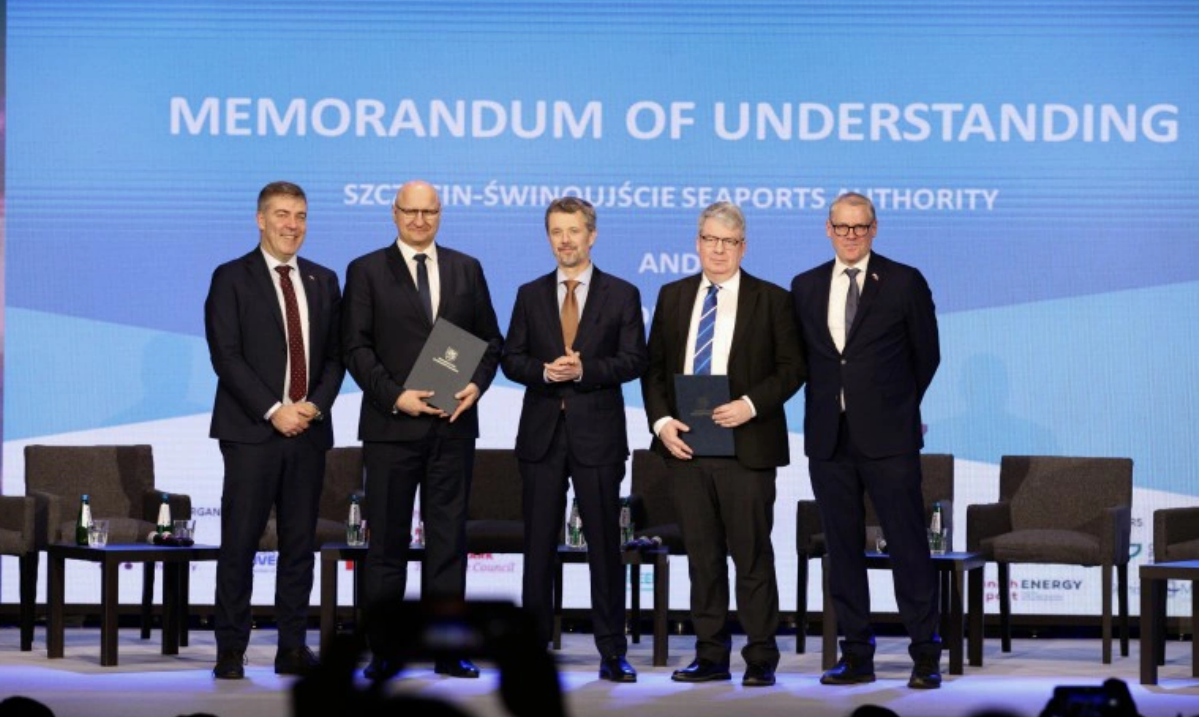
In a significant move towards enhancing collaboration in the wind energy sector, the Offshore Wind Port Alliance, comprising the largest offshore wind energy ports in Europe, has welcomed the ports of Szczecin-Świnoujście into its fold. The letter of intent was signed in Szczecin on February 2nd during the visit of King Frederik X of Denmark to Poland.
Dr. Stanisław Iwan, Acting CEO of ZMPSiŚ SA, signed the document on behalf of the company, accompanied by a debate on wind energy. Aneta Szreder-Piernicka, Director of Commercial Affairs, represented the company in the discussion.
The primary objective of the alliance is to optimize the utilization of offshore wind energy, aligning with Europe’s ambitious goals in this domain. While offshore wind farms play a crucial role in ecological transformation, port capacity remains a bottleneck, posing a challenge to the realization of environmental goals.
Welcoming the Polish port of Szczecin-Świnoujście, the key players in Northern European offshore wind energy ports have expanded their alliance from six to seven members. This includes Denmark, the Netherlands, Belgium, France, Germany, the United Kingdom, and now Szczecin-Świnoujście. The close cooperation within the alliance aims to provide additional support in the construction of wind farms by optimizing processes and coordinating the logistics value chain.
Dennis Jul Pedersen, CEO of Port Esbjerg, speaking on behalf of the Offshore Wind Port Alliance, expressed enthusiasm about the inclusion of Szczecin, stating, “Szczecin is a forward-looking port where Vestas is currently building manufacturing facilities. The port is developing infrastructure for offshore wind energy and has significant ambitions in the wind energy sector. This aligns perfectly with the goals of the Offshore Wind Port Alliance.”
The event coincides with a delegation of Danish entrepreneurs, led by King Frederik X, visiting Poland.
“The current geopolitical situation in Europe and the ongoing ecological transformation necessitate the installation of a greater number of turbines as quickly as possible to help build energy security in Europe. However, the current challenge lies in port capacity. Therefore, we are strengthening our operational and practical cooperation to expedite ecological transformation through offshore wind energy,” added Jul Pedersen.
With the Baltic Sea witnessing dynamic growth in offshore wind energy markets, Poland is already establishing large-scale wind farms. The declaration from Esbjerg significantly increased the target for offshore wind energy in Europe. The Ostend Declaration, supported by a coalition of nine countries involved in the development of the North Sea as a green powerhouse for Europe, expresses the ambition to launch renewable offshore energy with a capacity of 120 GW by 2030 and 300 GW by 2050.
To support this goal, Germany, Denmark, Belgium, and the Netherlands jointly committed to delivering at least 65 GW of offshore wind energy by 2030, placing pressure on European ports. The collaboration within the Offshore Wind Port Alliance, formed last year by the largest wind ports in Europe, aims to optimize and cooperate to achieve these ambitious goals. With the inclusion of the ports of Szczecin and Świnoujście, the alliance now covers ports that can serve the Baltic countries.
The operational collaboration among the seven ports involves continuous coordination and knowledge-sharing, enabling them to optimize capacity usage efficiently for the construction of wind farms. Turbines require significant space in ports, and the lack thereof is a particular challenge. The collaborative efforts among ports help address this issue, ensuring that a wind farm can be constructed according to schedule without waiting for specific port availability.

